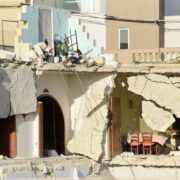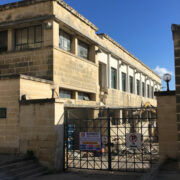PR 08/16 | Regularisation of Existing Development Regulations, 2016
In May 2016, the Kamra tal-Periti had submitted its formal reactions to the draft Legal Notice regarding regularisation of property. It had expressed its opinion that the draft regulations included too many lacunae and vague requirements, and that it would be appropriate for the legislator to enter into specific consultation with the Kamra, as required by legislation, prior to the promulgation of these regulations. The Kamra also expressed its fears that these regulations will open the door to severe blots in our built landscape, and will serve to promote the laissez faire attitude of certain developers by condoning providing a mechanism for illegalities to become legal.
Although this procedure was presented by the Planning Authority to the profession during a recent information meeting organised by the Kamra tal-Periti for its members, it is with regret that the Kamra tal-Periti notes no specific discussions were undertaken to address such concerns, and that most of the concernrs raised have not been addressed. These include:
- the fact that the Legal Notice contains many vague statements which give the impression that anything can be regularised, making no distinction between minor irregularities (such as those previously covered by a CTB Concessions) and major ones;
- the term ‘regularisation’ itself is not defined, neither in the Legal Notice, nor in the main Act;
- there appears to be no provision for public consultation on individual applications, nor for consultation with various authorities such as the Superintendence of Cultural Heritage, the National Commission for Persons with Disability, and others;
- there appears to be no mechanism for third parties to register an interest in an application unless they had previously reported the illegality to the Authority, and third parties do not have a right of appeal;
- although some media reports have given the indication that decisions on these applications will be taken at public sittings of the Planning Board, this provision is not specifically stipulated in the Legal Notice;
- while ODZ properties have been excluded, properties which are located within Urban Conservation Areas or which are themselves scheduled have not been excluded;
- the main criterion on the basis of which the Authority will determine an application is whether or not it constitutes an ‘injury to amenity’, which is an entirely subjective criterion that it open to wide interpretation;
- if an application is refused, the applicant is refunded a percentage of the fees of the application, however there is no obligation for the Authority to issue an enforcement notice and/or to request the removal of the illegality.
All of the above observations, and others already published by the Kamra tal-Periti during the public consultation phase, render these new regulations unclear and widely open to interpretation. Above all, they also fail to address the importance of promoting quality of our building stock by allowing illegalities which fall well below the minimum requirements of established regulations to be regularised and made legal.






